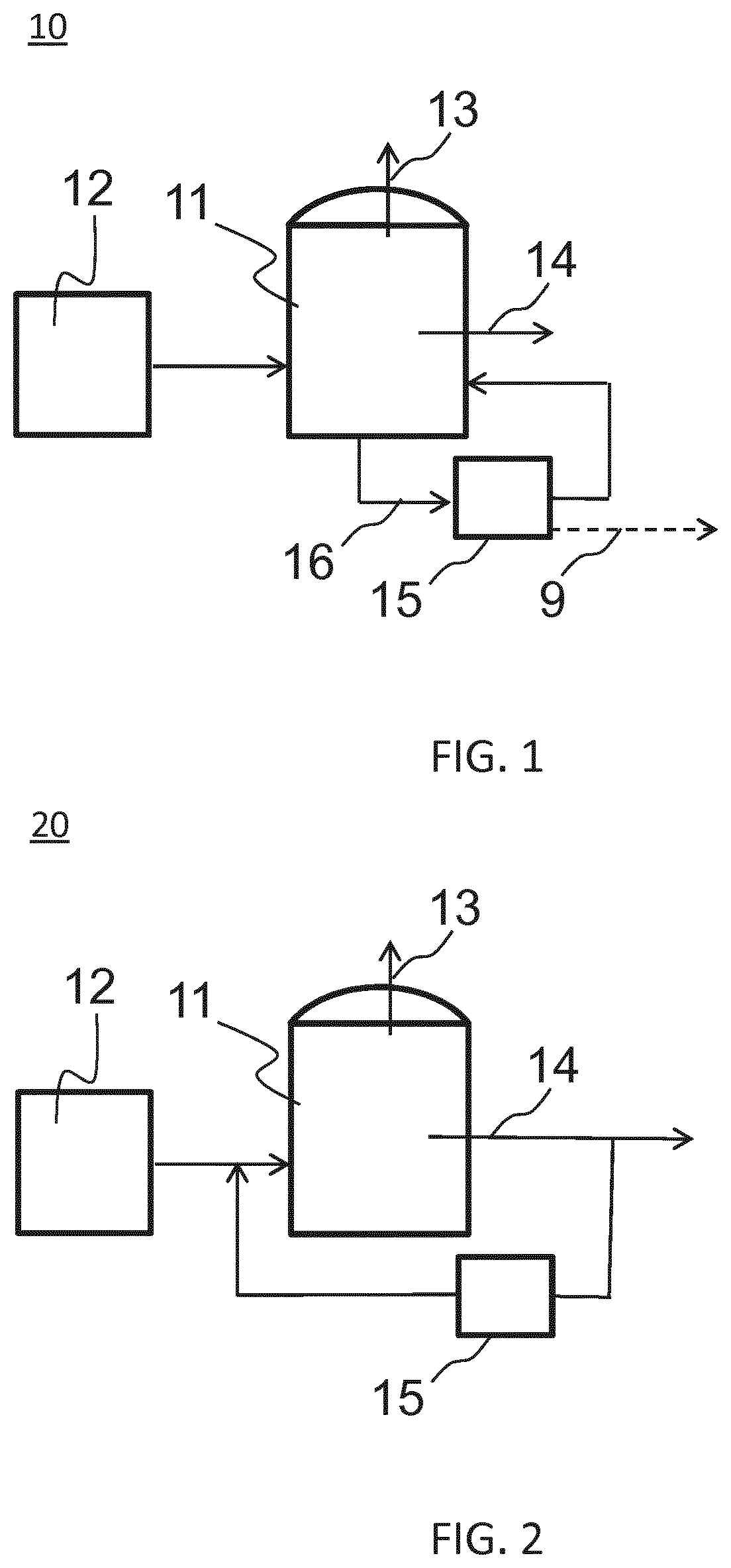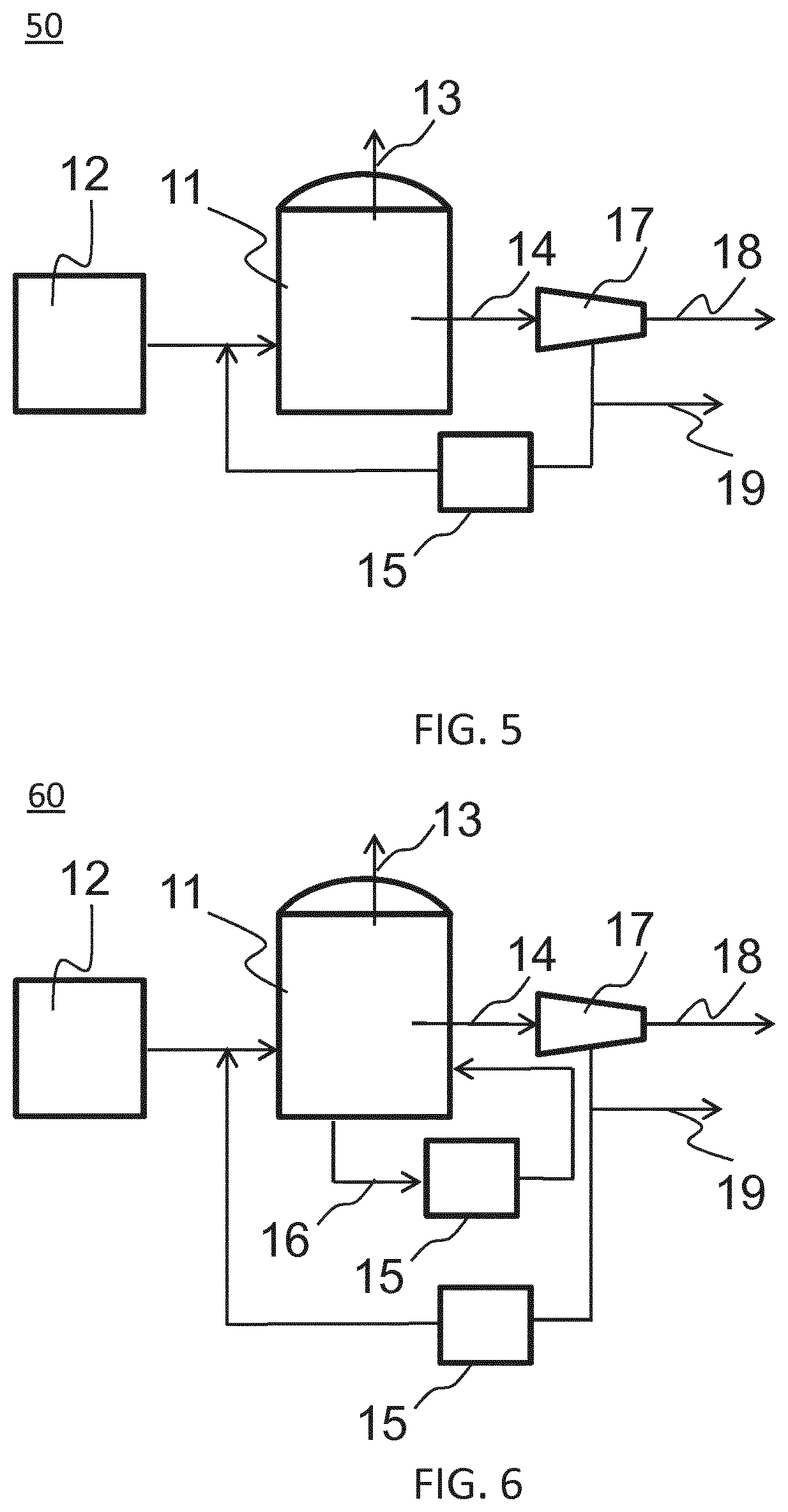Apparatus and method for refractory organics conversion into biogas
a technology of refractory organics and apparatus, applied in the field of apparatus for refractory organics conversion into biogas, can solve the problems of reducing biological activity, difficult hydrolysis of organic substrates, and reducing the number of organisms, so as to increase the overall biogas yield, increase the biogas production, and reduce the consumption of reagents
- Summary
- Abstract
- Description
- Claims
- Application Information
AI Technical Summary
Benefits of technology
Problems solved by technology
Method used
Image
Examples
Embodiment Construction
[0039]On the figures:[0040]References 10, 20, 30, 40, 50, 60, 70, 80, 90, 100, 110, 120, 130, 140, 150 designate apparatuses according to different embodiments of the invention.[0041]Reference 11 designates an anaerobic digester.[0042]Reference 12 designates organic material.[0043]Reference 13 designates biogas.[0044]References 9 and 14 designate a digestate.[0045]Reference 15 designates a device for controlled partial oxidation.[0046]Reference 16 designates a recirculation loop.[0047]Reference 17 designates a dewatering unit.[0048]References 18 and 28 designate a solid cake.[0049]Reference 19 and 29 designate a liquid centrate.[0050]Reference 21 designates a set of control input parameters.[0051]Reference 22 designates a control loop.[0052]Reference 23 designates a control variable, for instance a quantity of soluble organic molecules.[0053]Reference 24 designates a set point for control variable 23.[0054]Reference 25 designates a unit for H2O2 removal.[0055]Reference E designates ...
PUM
| Property | Measurement | Unit |
|---|---|---|
| pH | aaaaa | aaaaa |
| refractory | aaaaa | aaaaa |
| residence time | aaaaa | aaaaa |
Abstract
Description
Claims
Application Information
 Login to View More
Login to View More - R&D
- Intellectual Property
- Life Sciences
- Materials
- Tech Scout
- Unparalleled Data Quality
- Higher Quality Content
- 60% Fewer Hallucinations
Browse by: Latest US Patents, China's latest patents, Technical Efficacy Thesaurus, Application Domain, Technology Topic, Popular Technical Reports.
© 2025 PatSnap. All rights reserved.Legal|Privacy policy|Modern Slavery Act Transparency Statement|Sitemap|About US| Contact US: help@patsnap.com



